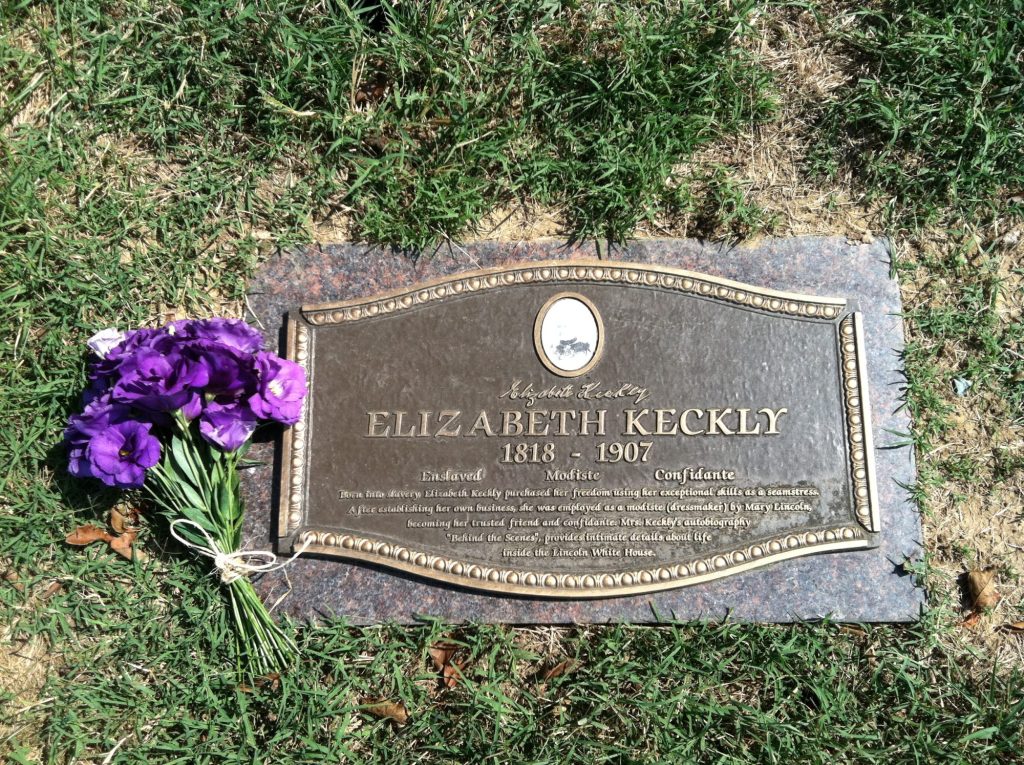Not-So-Final Resting Places: Grave Reflections on the Historical Reputation of Elizabeth Keckly
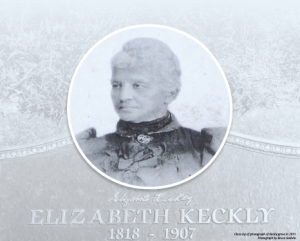
Not-So-Final Resting Places: Grave Reflections on the Historical Reputation of Elizabeth Keckly
By Michelle A. Krowl
“To look upon a grave, and not feel certain whose ashes repose beneath the sod, is painful, and the doubt which mystifies you, weakens the force, if not the purity, of the love-offering from the heart.” This is how former slave Elizabeth Keckly explained her decision not to visit the final resting place of her beloved mother, buried in an unmarked grave in a public cemetery in Vicksburg, Mississippi. While Keckly moved north after buying her freedom in 1855, her enslaved mother followed the Garland family to Vicksburg, after which Keckly “lost sight of the family for a few years” and the location of her mother’s grave as well.
While my connection to Elizabeth Keckly lacks the intimacy of a family member, I understood Keckly’s sentiment when I first tried to visit her grave in October 1995. After writing an undergraduate seminar paper on Keckly, the African American modiste and confidante of First Lady Mary Lincoln, I pledged to place flowers on her grave at Harmony Cemetery on a future visit to Washington, DC. That opportunity came in 1995, while conducting dissertation research. I knew from John E. Washington’s book They Knew Lincoln (1942) that Keckly had made arrangements to be buried at Harmony Cemetery, a prominent African American cemetery in northeast Washington, DC, and that a granite headstone marked her tomb.
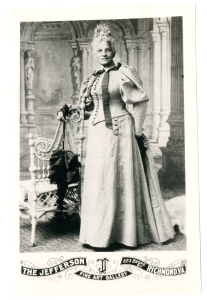
When ready to fulfill my promise, however, I was confused to find that Harmony Cemetery was now listed as National Harmony Memorial Park in Landover, Maryland. More concerning was discovering that Keckly’s grave bore no marker at all, as was the case for many of the graves in the Costin section of the cemetery. Cemetery staff provided me with an approximate location near a section marker where Keckly’s remains should be located, but in Keckly’s own words, I could “not feel certain whose ashes repose[d] beneath the sod.” I paid my respects and left my floral offering as best I could, but the visit felt incomplete. For a woman who loomed large in my own studies, and served as an important witness of the Lincoln White House, to have been forgotten and neglected in death seemed wrong. But as it turned out, the state of Elizabeth Keckly’s grave often mirrored her own historical reputation.
Born into slavery in Virginia in 1818, Elizabeth Hobbs Keckly was enslaved by the family of Col. Armistead Burwell, who was also her biological father. Burwell loaned the teenaged Elizabeth to his eldest son, Robert, who in 1835 took her with his family to Hillsborough, North Carolina, where he accepted a church position. Here Elizabeth personally experienced the violence of slavery more than ever before. The Burwells engaged a neighbor to whip her, which Keckly resisted with as much force as she could. Another white man in Hillsborough, Alexander Kirkland, pursued and sexually violated her, leading to the birth of her only child, George. (Years later, George passed for a white man to enlist in the Union army under the name George Kirkland. He was killed at the battle of Wilson’s Creek in 1861.) By 1842, she and her son had returned to Virginia, where she was reunited with her mother. In 1847 Colonel Burwell’s daughter Anne and her husband, Hugh Garland, moved to St. Louis, Missouri, taking Elizabeth and her immediate family with them. While the Garlands’ social standing remained high, their coffers continued to empty, and Hugh Garland contemplated renting out Elizabeth’s mother, Agnes. Horrified at the thought of her mother leaving the only family she had ever known, Elizabeth offered to use her skills as a seamstress to generate income. Garland agreed, and Elizabeth successfully “kept bread in the mouths of seventeen persons for two years and five months,” including the Garlands, who could “live in comparative comfort, and move in those circles of society to which their birth gave them entrance.”
This arrangement changed the course of Elizabeth’s life. As a sought-after dressmaker for prominent women in St. Louis, Elizabeth made connections in the white community. After Hugh Garland set $1,200 as the price of freedom for Elizabeth and her son in 1852, several white clients later advanced her the money in 1855. Elizabeth decided to seek a new life in the North in 1860, following the death of her mother in 1857, the failure of her marriage to the dissipated James Keckly, and the enrollment of her son at Wilberforce University. Elizabeth ultimately settled in Washington, DC, where her St. Louis connections provided her entrée with the ladies of political Washington. This included Varina Davis, the wife of then-Senator Jefferson Davis, who offered to take Elizabeth south with them when Jefferson Davis joined the Confederate government.
Keckly’s ambition, however, was to work for the ladies of the Union White House. Her chance came in March 1861 when the new first lady, Mary Lincoln, required a dressmaker to replace a gown spoiled in an accident. Keckly’s good reputation preceded her, and after assuring Mrs. Lincoln of reasonable rates, she became Mary Lincoln’s primary modiste for the next four years. Keckly also became an intimate of the Lincoln family, observing the domestic side of the White House as few did during the Civil War. Mary Lincoln especially came to rely on Keckly’s calming presence during many times of trial and tragedy, perhaps finding in the African American Keckly a reminder of the enslaved women in the Todd family home on whom she relied for comfort as a child. “Lizabeth, you are my best and kindest friend,” Mary Lincoln told Keckly, “and I love you as my best friend.”
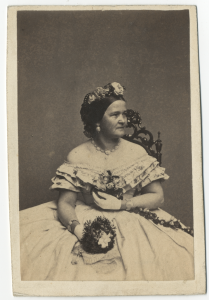
Keckly’s association with the Lincolns, and other prominent women who formed her clientele in Washington, provided Keckly with an unusual financial and social status for a woman of her race. Beginning in 1862, Keckly used her connections to form and help fund the Contraband Relief Association, of which she served as president for several years. The association provided aid to formerly enslaved people in their transition to freedom during and after the Civil War.
Abraham Lincoln’s death on April 15, 1865, not only changed the course of the nation’s history but also the life of Elizabeth Keckly. Mary Lincoln suffered “wild, tempestuous outbursts of grief from the soul,” and few but Elizabeth could comfort her. She remained with Mrs. Lincoln for weeks after President Lincoln’s assassination and was persuaded to leave her own business to help the Lincolns get settled in Chicago. “I had been with her so long,” Keckly explained, “that she had acquired great power over me.” Mary Lincoln continued to turn to Elizabeth for assistance, disastrously so in 1867. During her time as first lady, Mary Lincoln amassed tens of thousands of dollars in shopping debts. She rashly proposed selling the gowns and jewelry she would no longer wear and trusted agents in New York to manage the scheme. Mary implored Elizabeth to help her in what became known as the “Old Clothes Scandal.” The agents mishandled the operation, Mary Lincoln’s reputation sunk even lower in public estimation, and Elizabeth Keckly was left in New York to sort out the mess while her own finances suffered.
To assist in Mary Lincoln’s public rehabilitation, and to demonstrate her own upright behavior in the relationship, Keckly published Behind the Scenes: or, Thirty Years a Slave, and Four Years in the White House in 1868. “My own character, as well as the character of Mrs. Lincoln, is at stake, since I have been intimately associated with that lady in the most eventful periods of her life,” Keckly wrote. “To defend myself I must defend the lady that I have served.” The book combined elements of a slave narrative, autobiography, and exposé of the Lincoln White House. And it was a disaster for its author. Keckly shared intimate details of the Lincolns’ domestic life, and Mary Lincoln’s candid opinions on notable public figures. Worse, Keckly entrusted her editor, James Redpath, with many of Mary Lincoln’s letters to be consulted for context, and they were instead published as an appendix to the book. Keckly’s “literary thunderbolt” drew condemnation as a betrayal of the Lincolns and ruined her friendship with Mary Lincoln, who dismissed Keckly as “the colored historian.” Mary’s son Robert may have had the book suppressed, and it certainly generated no income for Keckly, who lost the trust of many of her former clients. Not only did Elizabeth lose her good name for a time, but for over a century she also lost her name itself. She signed documents using the surname “Keckly,” but the book was published under the name “Keckley.” While she had been called by many names during her lifetime, and her surname had been misspelled before, Behind the Scenes perpetuated the spelling as “Keckley” with an additional “e” for years to come.
Keckly remained a respected figure in Washington’s African American community, where she was active in her church and admired for her dignity, intelligence, and fashion sense. And she returned to her sewing for support. In 1892 she accepted a teaching position at Wilberforce University and helped organize its display at the 1893 World’s Fair in Chicago. Sometime in the 1890s she returned to Washington, DC, where she lived modestly at the National Home for Destitute Colored Women and Children. She died at the home on May 26, 1907.
Consistent with the self-reliance that characterized her personal life, she made arrangements for her death and burial. Reflective of the racial segregation of the living in Washington, DC, in 1907, burials in most cemeteries, or sections within cemeteries, in the capital region were segregated by race. Keckly chose to be buried at the Columbian Harmony Cemetery. Established in the 1820s as part of an African American mutual aid society, at the time of Keckly’s death Harmony Cemetery had become a prominent burial ground for Black Washingtonians. Keckly’s estate paid $304 for the undertaker, her grave at the Columbian Harmony Cemetery, and the monument that marked what she anticipated would be her final resting place. “At the grave, at least, we should be permitted to lay our burdens down,” she once wrote. But Keckly could not control events in the living world.
After failing to achieve much circulation in 1868, Behind the Scenes was republished in 1931. By 1935, however, not only did Keckly’s authorship of Behind the Scenes come into question, but journalist David Rankin Barbee also claimed that no such person as Elizabeth Keckly even existed. Amateur historian John E. Washington quickly disputed Barbee’s assertion, but the incident inspired him to conduct further research and publish the stories he had heard since childhood of African Americans who personally knew Abraham Lincoln. Elizabeth Keckly assumed a prominent place in Washington’s 1942 book They Knew Lincoln, which reproduced several documents relating to Keckly’s life. Washington also included a photograph of Keckly’s grave and tombstone at Harmony Cemetery, plus his description of the spot. “On a beautiful knoll, facing the east beneath a mammoth spreading elm tree rests forever all that remains of Elizabeth Keckley,” he wrote. “Mrs. Keckley’s name and date of death are carved on the face of her tomb, and she selected these words from Psalm 127, second verse, to be inscribed beneath them: FOR SO HE GIVETH HIS BELOVED SLEEP.
For Elizabeth Keckly and other residents of Harmony Cemetery, “forever” ended in the year 1960, when Harmony Cemetery moved. After having been one of the preeminent African American cemeteries in Washington, DC, at the turn of the century, lack of land for expansion, increasing maintenance costs, and declining revenues had plunged the cemetery into financial crisis by the 1930s. By the 1950s, the physical state of the cemetery reflected its disordered finances, ultimately prompting the Columbian Harmony Society to sell the Rhode Island Avenue property to developer Louis N. Bell in 1958. Bell agreed to expand a cemetery in Landover, Maryland, to accommodate the existing Columbian Harmony Cemetery and to involve the society in the new National Harmony Memorial Park. Bell also agreed to pay for the reinterment in the new cemetery of the 37,000 remains, which included those of Elizabeth Keckly. Part of the old Harmony Cemetery site on Rhode Island Avenue in northwest Washington, DC, was ultimately incorporated into the Rhode Island Avenue Metro subway station, opened in 1976.
While the agreement with Louis Bell specified that he would fund the removal of remains, nothing was said regarding the fate of the existing tombstones and monuments on the graves. Apparently, the markers were either plowed under at the old cemetery or hauled off as debris. In 2009 hikers discovered some old Harmony headstones forming part of a riprap constructed on the shore of the Potomac River in King George County, Virginia. By 1960, no one seems to have been paying attention to Elizabeth Keckly to ensure that her tombstone accompanied her remains. Without direct descendants or other friends to monitor the marking of her grave, Keckly’s remains at the new Harmony Cemetery were left unmarked, just as her mother’s had been in Vicksburg a century before.
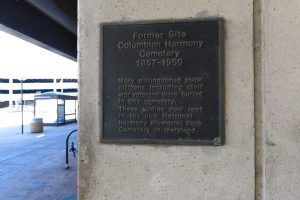
Similarly, Elizabeth Keckly’s name largely seemed to fade from public memory apart from the Lincoln scholars who continued to use Behind the Scenes as an essential source for the domestic side of the Lincoln White House. Renewed interest in African American history following the Civil Rights Movement of the 1960s occasionally generated interest in Keckly’s memoir. Various publishers reprinted Behind the Scenes every twenty or thirty years, but John E. Washington’s important They Knew Lincoln remained out of print for decades. Keckly continued to serve as a witness, or a source, but rarely a focus of research in her own right. Her unmarked grave in Maryland reflected her status on the periphery.
The new millennium brought a welcome change to Elizabeth Keckly’s historical reputation. In 2003 Jennifer Fleischner published the dual biography Mrs. Lincoln and Mrs. Keckly, which not only gave Elizabeth equal billing with Mary Lincoln but also prompted a reevaluation of the spelling of Keckly’s surname in light of historical evidence. Steven Spielberg’s 2012 motion picture Lincoln included Elizabeth Keckly as a supporting character, portrayed by actress Gloria Reuben. In 2013 Jennifer Chiaverini published her novel about Elizabeth Keckly, Mrs. Lincoln’s Dressmaker, and Tazwell Thompson’s play Mary L. & Lizzy K. ran at Arena Stage in Washington, DC. George Saunders quoted Keckly repeatedly in his 2017 blockbuster novel, Lincoln in the Bardo. Kate Masur shepherded a welcome 2018 republication of They Knew Lincoln, and later that year the New York Times included Keckly in its “Overlooked No More” series of obituaries devoted to historical figures neglected at the time of their death. Academics also increasingly gave Keckly her due with scholarly articles devoted to various aspects of her life, some of which were collected by Sheila Smith McKoy in the two-volume Elizabeth Keckley Reader. Tamika Y. Nunley’s contribution to Gary W. Gallagher and Elizabeth R. Varon’s edited volume New Perspectives on the Union War (2019) examined Keckly’s wartime experiences with barely a reference to Abraham or Mary Lincoln. The proliferation of digitized books in the public domain included Behind the Scenes, which is now available to anyone with an internet connection.
This renewed attention on Elizabeth Keckly extended to her final resting place as well. In 2009 researcher Richard Smyth alerted several historical organizations about the unmarked location of Keckly’s grave, which prompted an effort to rectify the situation. The Surratt Society, The Lincoln Forum, and other groups raised the funds for a marker, which was dedicated at the National Harmony Memorial Park on May 26, 2010, the 103rd anniversary of Keckly’s death. The new marker includes her name and life dates, a photograph, a copy of her signature, a brief history of her life, and describes her as “Enslaved—Modiste—Confidante.”
On a sunny Sunday morning in September 2019, just shy of twenty-four years since my first attempt to visit Elizabeth Keckly’s grave, I once again journeyed to the National Harmony Memorial Park in Landover, Maryland. Armed with the grave number and a general memory of the location of the Costin section in the park, I easily located Keckly’s grave on a gentle slope. Unlike several other markers I passed that honored the memory of unknown “remains found at Columbian Harmony Cemetery” in the early 2000s, Keckly’s new marker proclaims her identity and invites contemplation of her extraordinary life. Unlike my 1995 “offering from the heart,” this visit felt complete. The marker over Elizabeth Keckly’s grave provided a recognized spot at which to pay my respects and leave royal purple flowers, in homage to Mary Lincoln’s purple dress at the Smithsonian Institution, credited to Keckly’s craftsmanship. All these years later, my pledge to leave flowers on Elizabeth Keckly’s grave has been fulfilled at last.
Michelle A. Krowl is the Civil War and Reconstruction specialist in the Manuscript Division at the Library of Congress. This article appears as chapter 22 in Final Resting Places: Reflections on the Meaning of Civil War Graves (University of Georgia Press, 2023), edited by Brian Matthew Jordan and Jonathan W. White.
